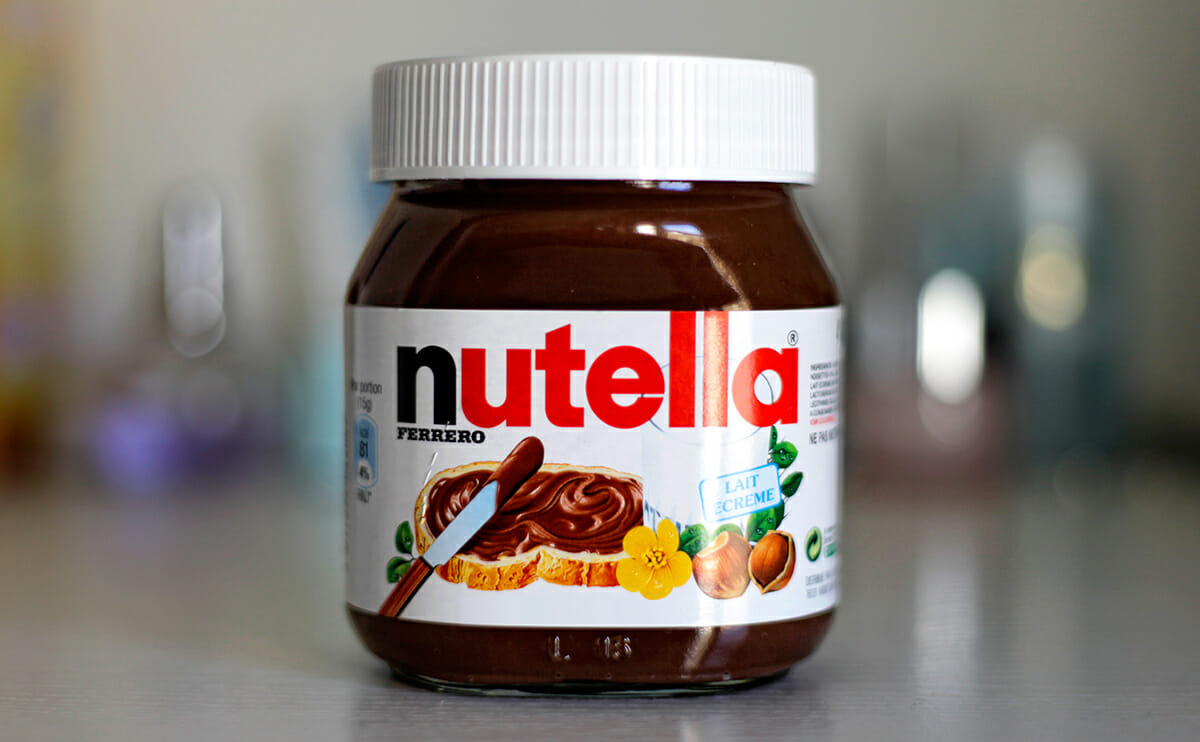There is no actual "shortage" of Nutella, though prices have risen by as much as 60%, and may rise yet more.

And, predictably, there is no actual “shortage” of Nutella, though prices for it have risen as well — by as much as 60 percent, and may rise yet more.
The whole thing started on August 20, when the Huffington Post ran a scary-sounding article about a looming “major shortage.” The HuffPo’s Jonathan Feldman declared that “if you see long lines at your grocery store, it might be people trying to get their hands on the last jars of Nutella before prices surge.”
The story was certainly attention-getting (and more to the point, click-generating), but even if production of Nutella were halted entirely, it seems unlikely it would have resulted in “long lines” of people hoping to snap up the remaining jars. Feldman did not respond to a request for comment.
Turkey basically controls the growing hazelnut market – 70% of the world’s hazelnuts are grown there.
As we’ve seen recently with limes, avocados, chicken wings, and other foodstuffs, “shortages” of certain popular commodities can make for highly viral news stories, whether the underlying problem is serious (limes) or hyped (chicken wings).
Thankfully, most of the news outlets that picked up the hazelnut-shortage story put it into perspective: prices of Nutella might rise more (maybe by a lot) until supplies catch up (probably by next year).
HuffPo’s story may have provided a service by forcing other media outlets to look into the story. Many of us have learned that Turkey basically controls the growing hazelnut market — 70 percent of the world’s hazelnuts are grown there. We also now know that, because hazelnuts are grown in a single region there — the slopes facing the Black Sea — that the market can be driven by the whims of nature. (And nature might get more whimsical in the future depending on the effects, if any, of climate change on the region.)
It can also be driven by the whims of Ferrero, the Italian producer of Nutella, which snaps up a quarter of the crop every year. In July, the world’s biggest buyer of hazelnuts acquired one of the world’s biggest suppliers — Oltan Group. Competing confectioners are reported to be worried about Ferrero’s market power (“Nutella Hogs Hazelnuts… “ was Businessweek’s headline), but the European Commission approved the deal, noting that there are still plenty of competing suppliers out there.
Still, Ferrero’s position as a major buyer already bestows it with daunting market power. And that power is only increasing, as Nutella spreads itself further across the globe. Its biggest growth is coming from North America, and particularly the U.S. Ten years ago, Nutella was little more than a curiosity here. Now, there are Nutella bars popping up. People are going crazy for this supremely unhealthy goo. Global sales of the spread grew by 6.4 percentlast year, to $2.46 billion. According to Euromonitor, sales of all chocolate spreads rose by 12 percent just last year — and Nutella makes up 70 percent of those sales.
As demand rises, American growers are working feverishly to make the United States a player in the hazelnut market. And they’ve made great strides, but for now, the U.S. produces only about 7 percent of the global supply. One big reason for that is the Eastern Filbert Blight, which has made it impossible to grow nuts in the northeast, and has spread to Oregon as well. Luckily, there has been some success creating blight-resistant hybrids, and Oregon’s production has skyrocketed in recent years. For about 25 years, acreage devoted to hazelnuts (the entire U.S. crop is confined to Oregon’s Willamette Valley) stood at about 25,000. Since 2009, it has been growing by between 2,000 and 3,000 acres per year, says Polly Owen, executive director of the Oregon Hazelnut Marketing Board.
Before the rise of Nutella, the American crop ‘was pretty much all going overseas.’
Hunger for hazelnuts in China is also driving demand, which over the past decade has usually scarfed up about 70 percent of the world crop, according to Jeff Fox of Hazelnut Growers of Oregon. Before the rise of Nutella, Fox said, the American crop “was pretty much all going overseas.”
The frost in Turkey, combined with rising demand, pushed wholesale prices up by 30 percent this year, from $1.30 a pound to $1.70, Fox said. This is of course great news for Oregon growers, but both Owen and Fox warned against too much celebrating. “Crop freezes aren’t good for anybody” in the long run, Fox said. And Owen said that while the cash infusion is great for growers, “we aren’t looking at this as a good thing.” The hesitation to crow is partly because if prices jump too high, buyers might cut back, possibly switching to substitutes. While Ferrero obviously can’t do that, other confectioners can, and so can sellers of mixed nuts, which make up a not-inconsiderable portion of the market (thanks in part to increased demand among people looking for more protein in their diets.)
Also, a weather-caused price spike can distort markets — for example, by giving the impression that margins for growers are higher than they actually tend to be over time. For this year, though, Owen said,”you can bet that every nut that drops on the ground will be picked up and sold.”